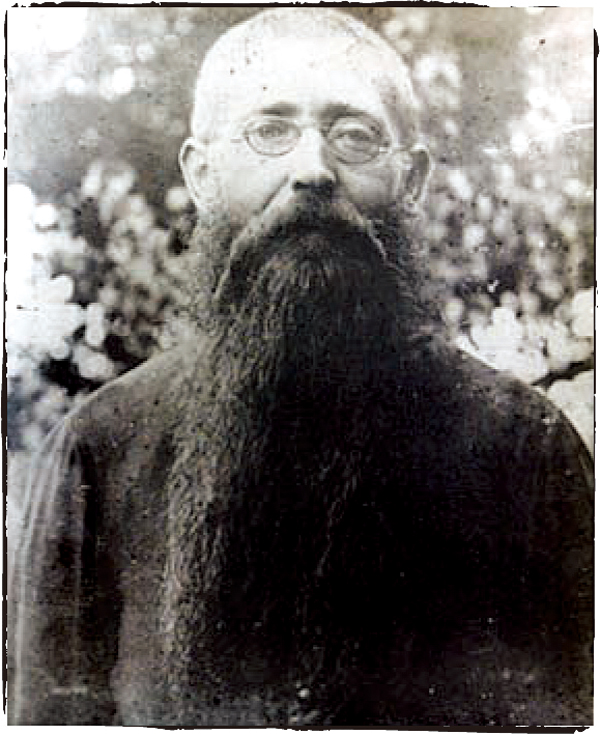| |
 |
|
| ▲ Father Taquet Photo courtesy Halla Ilbo |
This article is translated from the book, ‘Pioneers who highlighted the value of World Natural Heritage Jeju’.
In the 1800s and early 1900s, Jeju was a remote island hardly ventured upon by western foreigners. However, due to a select group of missionaries, diplomats, and explorers, Jeju slowly started to have some contact with the western world.
One such pioneer was Father Emile Joseph Taquet. Born near the border between France and Belgium on October 20, 1873, he studied to be a priest and shortly after graduating was sent to Korea on a missionary post.
However, despite his primary job of being a missionary, it was his work in the field of plant taxonomy, or the classification of plants, that he became most well known for.
In fact, his work and many of his specimens were sent to universities around the world where they were used in various studies that were published as far wide as Japan, France, Germany, Denmark, Switzerland, and the United States.
His primary achievement in relation to Jeju’s plants was the classification of the famed King Cherry Tree, a type of cherry blossom still seen by thousands of visitors every year at the Jeju Cherry Blossom Festival.
His missionary work on Jeju began in 1902, five years after he first left Paris. This would have seen him thrown into a difficult environment as it was a mere one year after an armed conflict between Catholics and other people living on Jeju.
This conflict, brought about by underlying resentment towards Catholics, as well as tax reasons, resulted in the deaths of around 200 people.
Luckily for Taquet, despite arriving soon after this he seems to have avoided many of the problems that previous Catholics on the island faced.
Upon arriving on Jeju he initially stayed in a church in Hanon, an area just west of Seogwipo city. He then moved on to Hongno which is now the Seohong area of Seogwipo city.
He stayed here for thirteen years and it was during this time that he did the majority of his plant collecting. It was said that at times the church was filled with a variety of beautiful plant specimens.
In fact, during this time he was almost more well known on Jeju for his plant collecting than his work with the church. A local doctor in the field of butterflies,Joo-myung Seok, wrote in an article that " Taquet was more famous as the Jeju plant collector than as a missionary".
| |
 |
|
| ▲ Father Taquet’s work added significantly to research relating to Korea’s flora Photo courtesy Halla Ilbo |
The specimens he collected were either sold, with the profits going towards his missionary work, or donated to European universities or scholars who were able to publish Taquet’s findings in journals.
Luckily for scholars researching his life, Father Taquet was also a keen letter writer and his correspondence with Bishop Gustave Mutel, totaling 18 letters, give a good insight into his life.
While the letters mainly spoke about matters related to the management of the church and the spread of its ideas, they also spoke frequently about Father Taquet’s plant collecting habits.
One particular letter showed how dedicated he was to his craft, "after your leaving (Bishop Gustave Mutel visited Jeju in August 1907), I harvested the plants and started to dry them. The house is full of dried plants. Overcoming the cold north wind, I tried to find more plants that I haven’t yet collect. Two cruciferous flowers and two starflowers are still in the drying bucket... I'm most involved with the classification of those flowers and Father Faurie's pictorial book of the flora helped me a lot in the study process".
Father Taquet’s plant collecting really took off in the year 1907 and it was shortly after this that he made his greatest find. According to an article published by Dr. Seok Joo-myung in Culture Joseon in 1942, on April 14, 1908, Father Taquet climbed 600 meters up Halla Mountain to the Gwaneumsa Temple and collected a flower from a cherry blossom tree.
This specimen, Cherry Blossom Tree No. 4638 became the first specimen collected from a King Cherry Tree and meant that Jeju became known as the home of the King Cherry Tree.
As well as his correspondence with Bishop Mutel, Father Taquet also had a good relationship with a Japanese botanist named Nakai Takanoshin.
In fact, this relationship proved to be crucial as Father Taquet’s work was really ratified when, in 1911, Nakai Takanoshin stayed with Father Taquet and helped him compile a list of specimens he had found.
It is said that this work didn’t only add significantly to research relating to Jeju’s flora, but also the flora of Korea as a whole.
Soon after this Taquet’s time in Jeju came to a close when in 1916 he was assigned a post in the southern coastal city of Mokpo.
From here he lived in various places throughout Korea where he continued to collect plants, complete his missionary work and also work as a professor. He passed away in Daegu on January 27, 1952.
|





















